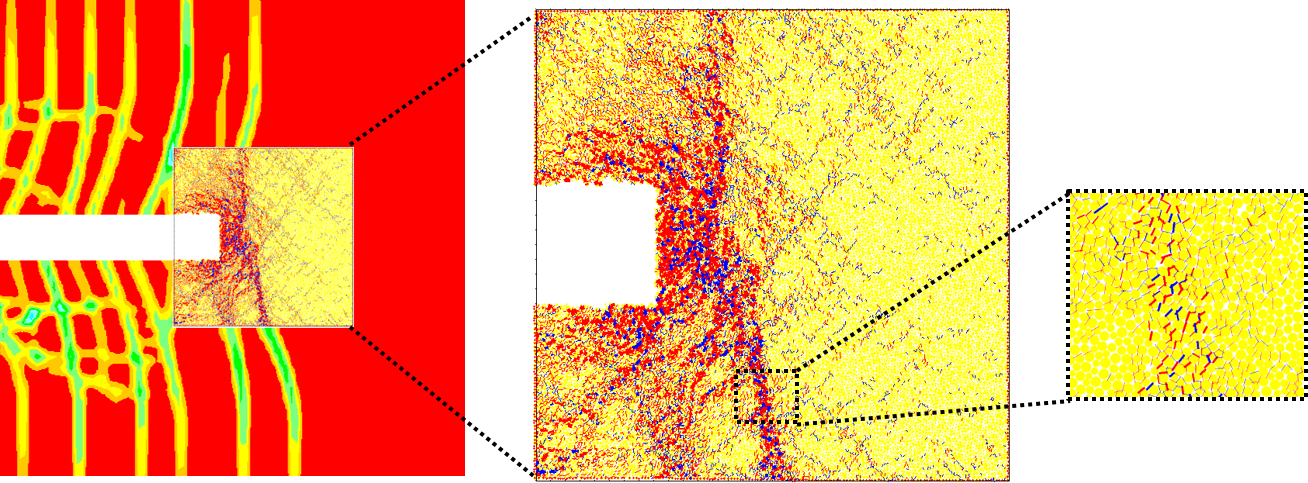Brittle Rock Fracturing Mechanisms in Deep Gold Mines
Project Description
Many gold mines in South Africa are situated 2 to 4 km deep in sedimentary deposits extending for hundreds of square kilometers along mostly tabular reefs often less than one-meter thick.
AngloGold Ashanti’s operational depth of mining increases every year following a declining gold reef with the surrounding rock experiencing large displacements. The mine seeks to understand the rock behavior, especially brittle failure mechanisms, inherent at depth with the ultimate goal being to develop a rational methodology for mine design, especially as mining continues deeper.
Itasca's Role
Itasca was asked to develop a generic mechanical model for rock behavior around stopes as they advance in deep gold mines to reproduce induced fracture patterns; then investigate the fracturing mechanisms; and relate them to in-situ conditions such as parting planes, in-situ stresses, and existing mine geometry. Two approaches were employed to develop a modeling environment for stope-scale systems. The first approach is continuum-based and utilizes the Mohr-Coulomb strain softening model using FLAC alone. The second approach employed a coupled continuum-discontinuum technique, where the continuum region is modeled by FLAC and the discontinuum region is modeled by a PFC2D model embedded (coupled) within the larger FLAC model.
Project Results
Both approaches produce well-defined shear fractures and stope-parallel extension fractures similar to those observed in the field. Damage patterns evolve as the stope lengthens; thus, short stope lengths, or the sudden creation of longer stopes, are not sufficient for proper simulation of the mechanisms. The presence of parting planes in the model explains the absence of the stope-parallel extension fractures in the field observations as well as how shear fractures are formed ahead of the stope face. In the coupled FLAC-PFC2D models, the bonded-particle material exhibits formation of conjugate shear fractures that correspond with shear fractures in the continuum material. Additional damage structures appear to be present within these en echelon shear fractures that is similar to what is observed in actual shear fractures. There is also evidence of spalling at the stope face, distributed damage ahead of the stope face, and formation of extension fractures. The coupled model successfully exhibits a richness of localized detail in the simulated damage, while the surrounding FLAC model provides the far-field boundary conditions. Itasca also trained the mine engineers to apply the developed environment in practice.
Project Image(s)

References
Katsaga, T., and D. O. Potyondy. (2012) “A Generic Stope Model for Investigation of Fracturing Mechanisms in Deep Gold Mines,” in 46th US Rock Mechanics / Geomechanics Symposium (Proceedings, ARMA, Chicago, June 2012), ARMA 12-541. Alexandria, VA: ARMA.

